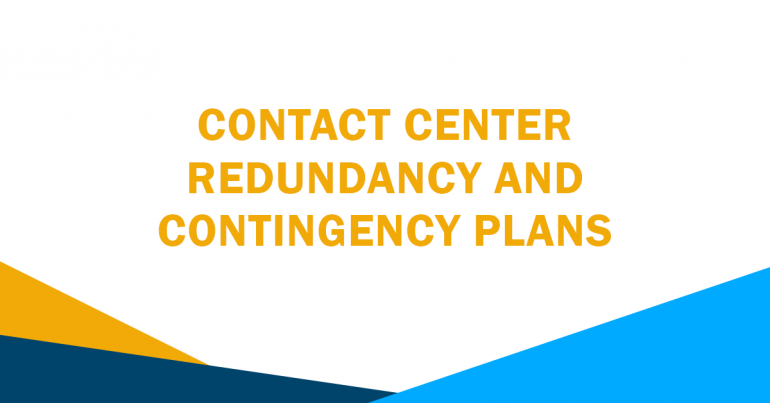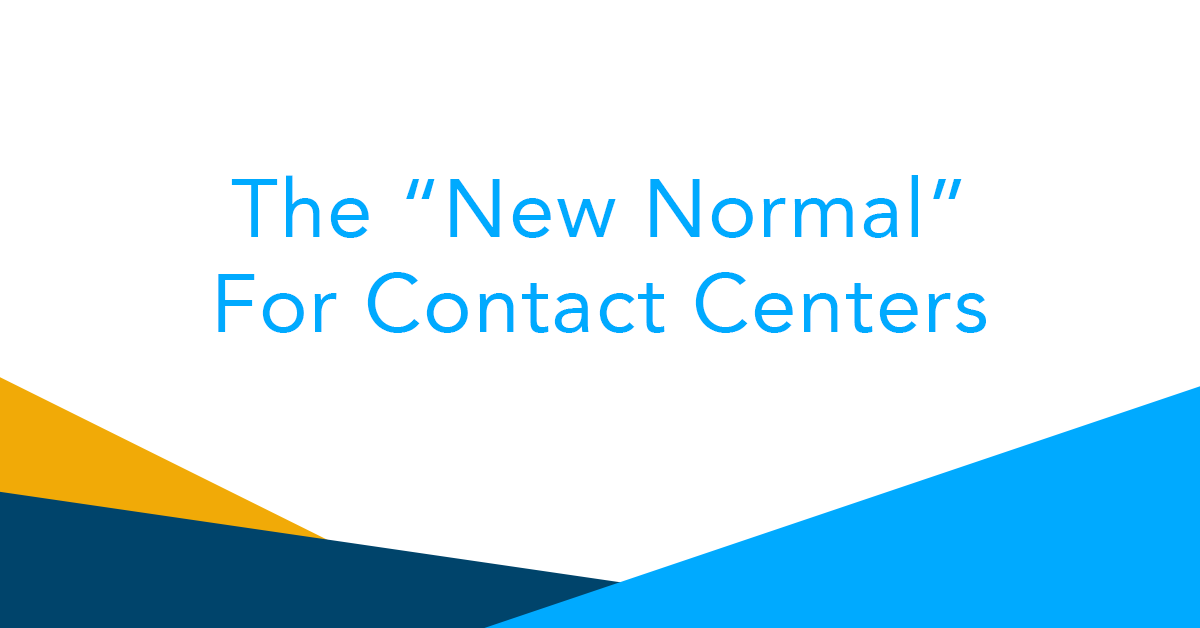Contact Centers are a critical and essential part of many businesses. In times of disaster, contact centers become even more critical for many organizations, and ensuring they are operating at full capacity is imperative.
Having a back-up plan in place in case of unforeseen circumstances means your company is prepared for any tough situations that may arise. Contingency and redundancy plans can ensure minimal disruption in service for your customers and your company. These “disasters” may include local and global events such as a world health crisis, natural disasters, company-wide shifts, local or national law changes, and more.
Here we’ll learn more about what redundancy and contingency plans are and what you can do to prepare accordingly.
What is a redundancy plan?
Redundant is defined as being in excess or beyond what is normal or necessary. A redundancy plan ensures your contact center has more than you need in case you need a back-up. This applies to all areas of your contact center, from your contact center agents to your technology and more.
What is a contingency plan?
A contingency plan is created by a business to have standing policies in case in-company or national emergencies take place. Protecting the employees through safety procedures and cross-training can help with stability and safety. Contingency plans are often implemented during times of catastrophes, war, health crises, or if a tragedy occurs within the company.
Why are redundancy and contingency plans necessary for contact center organizations to have?
A contact center’s primary function is to service and support companies’ customers. If a business is experiencing turbulence or substantial company-wide changes, a contact center needs to be the backbone to ensure consistent customer-focused service.
During times of turbulence, contact centers may find any of the following challenges occur:
- Technology outages
- Extreme increases in call or contact volume
- Drastic employee absences
- Frequent need to change company policies and procedures resulting in numerous changes to call scripts
- New call types or issues emerging
- PCI, HIPAA or other compliance challenges
Contact centers are often a lifeline that helps businesses stay afloat or grow during times of profound change. That’s why it is imperative to have a back-up plan in place before disaster ever strikes.
What should be included in a redundancy plan? Contingency plan?
The following items should be considered when developing a redundancy and contingency plan.
Technology Back-ups
Consider all of your critical technical requirements. What is the worst that could happen? How can you ensure you can be back up and running quickly? Talk with any vendors and software providers about their back-up plans and policies and know what’s in your contracts.
Geographic Separation
Consider geography when developing your back-up plans. If there is a natural disaster or other such events, having your data backed up or another partner available in a different part of the country or world will be imperative.
Employee Training
Training your employees in advance of any potential disaster will be essential for a smooth transition. This may include what to do in the actual emergency, to emergency scripts, to a different working environment. Consider training and preparing employees to work from home, ensuring you have the necessary equipment and protocols in place if this becomes necessary.
Communication
If there are long term adjustments in your work-flow due to emergencies, it’s essential to let your customers know. This could mean a notice on your website about hours of operation changes, shifts in contact information, telling your community about your contingency plan, and so on. Letting your clients know as soon as possible any changes that are occurring shows you’re in this together and building continuous trust in the process.
Why is developing a relationship with a nearshore contact center provider a good idea to include in your redundancy and contingency plan?
Geographic Diversity
If there is a natural disaster happening in your area and it disrupts business, having a contact center in a different location may be essential until you can get back up and running again. Nearshore contact centers are especially beneficial, as they are often in the same time zones and understand U.S. culture. This will help with filling in gaps without sacrificing quality and service levels.
Additional Trained Agents
Having trained agents ready to go at a moment’s notice may prove extremely useful for your back-up plan. By partnering with a nearshore contact center provider, you can have a team of agents that work alongside you year-round, helping with increases in call volume or certain call types. If disaster strikes, this partner will be there and ready to ramp up quickly until your internal agents (or other partners) are back to full capacity or until volume returns to normal.
Advantages of Nearshore
The benefits of nearshore outsourcing are numerous. For one, they are geographically close to all U.S. time zones allowing you to provide service during your regular business hours. Another, perhaps more important reason, is that nearshore outsourcing companies are often bilingual. With a significant percentage of the U.S. population’s first language not being English, this part is vital. Relying on relevant information in someone’s native language creates a thorough understanding and might gain you a customer for life.
About Centris
Centris is a nearshore contact center. Providing support for businesses for over 30 years, Centris delivers quality customer service, tech support, Live Chat, Soft Collections, and more. We are ready to help if the unexpected happens. Centris has comprehensive redundancy and contingency plans in place to ensure our clients don’t experience a lapse in service.
If you need guidance on any one of our services, or what is most appropriate for your company’s current situation, Centris would be happy to help.




